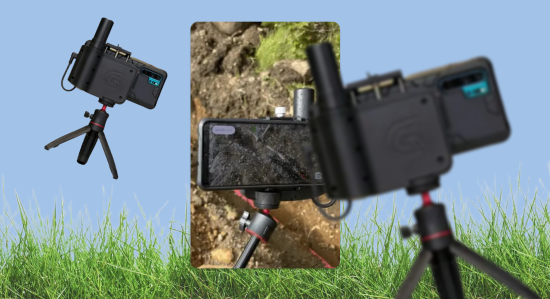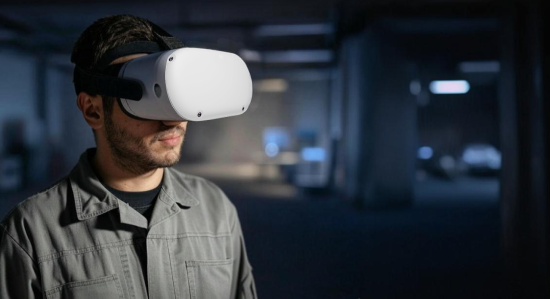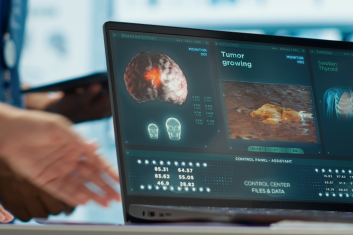Virtual Reality (VR) in the telecom industry is changing the way we communicate and interact with digital content. As telecommunications companies seek to innovate and stay ahead of the curve, they are increasingly exploring the potential of immersive technologies.
From enhanced customer experiences to improved network planning, VR and Augmented Reality (AR) are opening up new possibilities for telecom providers. These modern technologies are not only transforming service delivery but also creating new revenue streams and operational efficiencies. Let’s uncover how VR and AR in telecom are driving innovation and reshaping the industry landscape.
Benefits of AR and VR in the Telecom Industry
Enhanced network management and optimization
Telecom companies can use Virtual Reality to visualize, plan, and maintain networks. Engineers can simulate equipment deployment and modifications before implementation. AR/VR also allows real-time monitoring of network performance data, enabling faster issue identification and resolution. As a result, it improves network management.
Improved customer service and support
Customers can use their AR-enabled smart devices to share a video of a problem with technicians or customer service representatives, who can then provide real-time recommendations. With AR, visual cues, including diagrams, arrows or annotations, can be overlaid on the customer’s physical environment. This allows cable connections to be checked and equipment to be identified.
Streamlined employee training
Telecom companies can enhance training with immersive AR/VR sessions and improve employee experiences. By visualizing complex data more effectively, AR and VR boost productivity and efficiency. This technology also enables remote issue identification and timely repairs, streamlining operations and driving better business outcomes.
New revenue streams through immersive experiences
Telecom companies are using AR and VR to create new revenue opportunities. They’re offering immersive entertainment packages, virtual tourism experiences, and enhanced video calling services. These technologies also enable telecom providers to partner with content creators and game developers, opening up additional monetization channels.
Applications of AR and VR in Telecommunications
AR for real-time network monitoring and maintenance
Augmented Reality in telecommunications is used to enhance network management by overlaying real-time data on physical infrastructure. Thus, technicians can:
- Visualize signal strength and coverage
- Identify faulty equipment instantly
- Access diagnostic information hands-free
VR for infrastructure inspection and repair
Virtual Reality in the telecom industry enables remote inspection of telecom infrastructure, allowing engineers to:
- Virtually walk through cell towers
- Assess damage from natural disasters
- Plan repairs without physical presence
Virtual customer service centers
VR in the telecom industry is used to create immersive customer service experiences. Benefits include:
- Personalized troubleshooting sessions
- Virtual product demonstrations
- Interactive billing explanations
Safety simulations and risk assessment using VR
VR provides a safe environment for simulating dangerous scenarios in telecom operations:
- High-altitude tower maintenance
- Electrical hazard training
- Emergency response procedures
These simulations improve safety protocols and prepare workers for real-world challenges without exposure to actual risks.
VR for employee onboarding and training programs
Virtual Reality revolutionizes telecom workforce development through:
- Immersive technical skill training
- Realistic customer interaction scenarios
- Virtual tours of company facilities
AR-enhanced product demos and visualizations
Augmented Reality transforms how telecom companies showcase products and services:
- Visualize router placement in homes
- Demonstrate network coverage in real environments
- Provide interactive comparisons of service plans
Why You Need a Custom AR/VR Software Solution
-
Tailored solutions for telecom needs
Custom AR/VR solutions from HQSoftware address specific challenges in the telecom industry. Unlike off-the-shelf products, our tailored approach ensures that every feature is designed to optimize your unique operations. This results in more efficient processes, reduced costs, and improved service delivery tailored to your company’s specific requirements.
-
Scalability and flexibility for future growth
As your telecom business expands, AR/VR software can easily adapt to accommodate increased data loads, new features, or additional users. This flexibility ensures your investment remains valuable long-term, growing alongside your company without the need for frequent replacements.
-
Integration with existing telecom systems
Custom AR/VR solutions are designed to integrate smoothly with your current telecom infrastructure. This ensures compatibility with existing network management tools, customer databases, and billing systems. The result is a cohesive ecosystem that enhances overall operational efficiency and provides a unified experience for both employees and customers.
-
Alignment with your business goals and brand identity
Custom AR/VR solutions from HQSoftware are crafted to align perfectly with your business objectives and brand identity. From user interface design to functionality, every aspect is customizable. This ensures that the solution not only meets your operational needs but also reinforces your brand image and enhances customer loyalty.
Key Features of a Custom AR/VR Telecom Solution
High-quality visualizations and simulations
Our custom AR/VR solution offers realistic 3D models and simulations of telecom infrastructure. These high-quality visualizations enable precise planning of network deployments and immersive training scenarios. This feature also helps to quickly identify problems, predict maintenance, and make informed network optimization decisions.
User-friendly interface for technicians and customers
The HQSoftware team designs intuitive interfaces tailored to both technical staff and customers. For technicians, the AR overlay provides clear, step-by-step guidance for maintenance tasks. Customers benefit from easy-to-understand visualizations of service options and troubleshooting guides. This dual-focus approach enhances both operational efficiency and customer satisfaction.
Compatibility with multiple devices and platforms
Our custom solutions ensure seamless operation across a wide range of devices, from high-end VR headsets to smartphones and tablets. They support cross-platform functionality, allowing for consistent experiences on iOS, Android, and Windows devices. This versatility enables field technicians to access critical AR features on site and office staff to utilize VR capabilities for remote collaboration.
Customizable content for specific telecom needs
AR/VR solutions that we develop offer a flexible content management system, allowing telecom companies to easily update and customize virtual environments. Whether it’s adding new equipment models, updating training modules, or creating virtual customer service scenarios, the system enables quick content iterations.
Steps to Implementing AR and VR in the Telecom Industry

Requirements assessment and goal setting
Identify specific areas where AR and VR can add value. Define clear objectives, such as improving network maintenance efficiency or enhancing customer support using Augmented Reality in telecommunications. Establish measurable KPIs to track the success of your AR/VR implementation.Choosing the right technology partner
Select a partner with expertise in both AR/VR development and the telecom industry. Look for a provider with a proven track record in creating custom solutions. Ensure they understand your unique challenges and can offer scalable, integrated solutions.Development and customization
Work closely with your chosen partner to design and develop AR/VR applications tailored to your telecom needs. This involves creating 3D models, developing user interfaces, and integrating with existing systems. Prioritize features that align with your key objectives in the telecom industry.Training and support for your team
Implement a comprehensive training program to familiarize your staff with the new AR/VR tools. This should include hands-on sessions and documentation. Ensure ongoing technical support is available to address any issues and maximize adoption rates.Continuous improvement and updates
Regularly gather feedback from users and analyze performance data of your AR and VR implementations. Use these insights to refine and update your AR/VR applications. Stay informed about new technologies in Virtual Reality for the telecom industry and continuously explore ways to enhance your implementation for long-term success.
Industries We Serve
See what our virtual and augmented reality app developers can do for your business
Education
Simulations of education labs, AR/VR tutorials, virtual trips, recreations of historical scenes.
Manufacturing
Interactive guides to help train employees, test and maintain equipment, build prototypes to evaluate new components.
Marketing
Interactive 3D models of products and holograms equipped with audio, video, buttons.
Healthcare
Safe AR/VR environments for students to learn, AR-based interfaces for medical equipment.
Real estate
Virtual guided tours around buildings with interactive 3D objects superimposed over a physical scene in real time.
Retail
Collection showcasing, virtual dressing rooms, virtual assistants, in-store navigation.
Automotive
AR/VR in the automotive industry enhances vehicle design, manufacturing, and customer experiences by enabling virtual prototyping, immersive training, and interactive car showrooms.
Sports
AR/VR-powered training programs, VR live streaming, Big Data and IoT for unique fan experiences.
Entertainment
Full-presence and immersive experiences for cinemas, TV shows, games, theaters.
Agriculture
Crop monitoring, training, and precision farming, offering immersive visualization, real-time data, and remote assistance.
Tourism
Immersive AR/VR virtual tours of destinations, landmarks, and attractions, enabling travelers to explore and plan trips remotely.
Telecom
AR and VR enhance network management with real-time data overlays for maintenance efficiency, immersive customer service, and employee training in the telecom sector.
How to Start a Virtual Reality Software Project
Easy steps to start a partnership with us
Have no specifications?
Start an elaboration stage with us.
Want a test period?
Let’s start with a pilot project of 2-4 weeks.
Confident and ready to start?
Let’s get your software project running.
FAQs
How is VR related to telecommunications?
What is AR in telecom?
How is Virtual Reality applied in telecommunications?
Is VR equivalent to telecommunications?
We are open to seeing your business needs and determining the best solution. Complete this form, and receive a free personalized proposal from your dedicated manager.

Sergei Vardomatski
Founder





